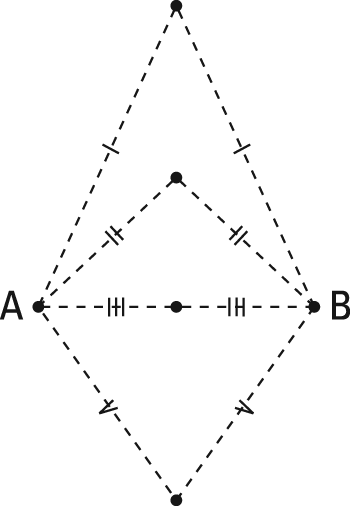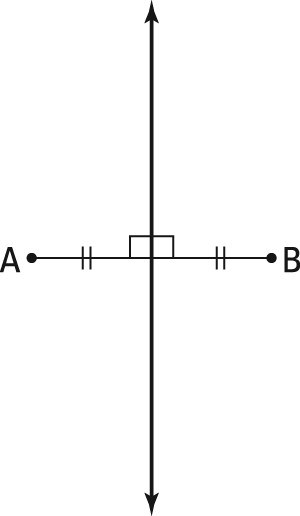If that sounds a little technical, don't worry—the following example will make everything clear!
To find the locus of all points equidistant from two given points, follow these steps:
- Identify a pattern.
The figure shows the two given points, A and B, along with four new points that are each equidistant from the given points.
Do you see the pattern? You got it—it's a vertical line that goes through the midpoint of the segment that connects the two given points. In other words, it's that segment's perpendicular bisector.
- Look outside the pattern. You come up empty in Step 2. Check any point not on the perpendicular bisector of line AB, and you see that it's not equidistant from A and B. Thus, you have no points to add.
- Look inside the pattern. Nothing noteworthy here, either. Every point on the perpendicular bisector of line AB is, in fact, equidistant from A and B. Thus, no points should be excluded. (Warning: Don't allow yourself to get a bit lazy and skip Steps 2 and 3!)
- Draw the locus and describe it in words. This figure shows the locus, and the caption gives its description.



